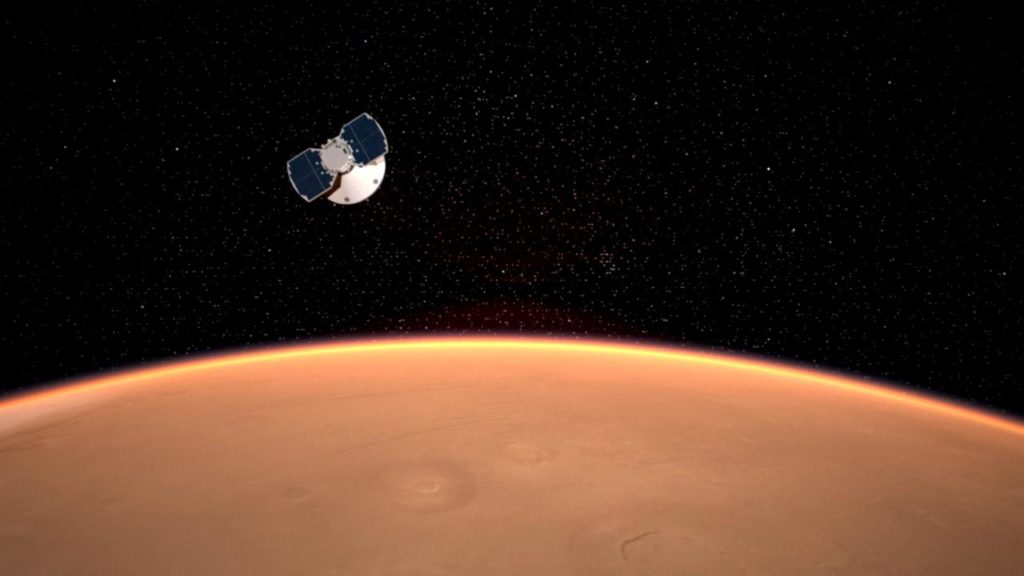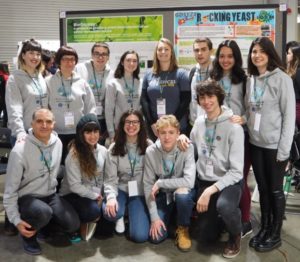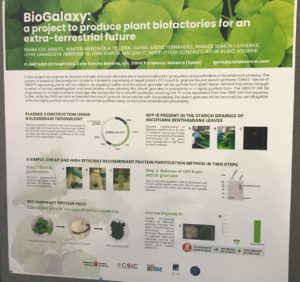Today NASA’s InSight lander will touch down on Mars. InSight, which launched on May 5, is NASA’s first Mars landing since the Curiosity rover in 2012. The lander will begin a two-year mission to study Mars’ deep interior, gathering data that will help scientists understand the formation of rocky planets, including Earth.

While every spacecraft that reaches Mars offers more knowledge of the Red Planet, a lot of the excitement is fueled by hopes that someday these missions will bring humans to Mars and enable us to start colonies there. While this goal seems very distant, tremendous progress is being made. Scientists around the globe are making incremental discoveries that will lead to the advances necessary to make colonization of Mars a reality.
I had the pleasure of meeting one team of scientists doing just this—eight high school students from iGEM Team Navarra BG. I met the team and their advisors at the 2018 iGEM Giant Jamboree, where they presented their synthetic biology project, BioGalaxy, as part of the iGEM competition. The problem they aimed to solve is key to helping humans stay on Mars for an extended period of time—how do you take everything you need when there isn’t enough room on the spacecraft?

Their solution was to engineer plants to easily and cost-effectively produce protein products needed by humans, such as medicines. This solution would provide a sustainable source of these substances, guaranteeing their availability long after the original supplies have been consumed (if they were even packed for the journey in the first place).
The system was designed to fuse the target protein to a starch synthase (GBSS), so a plant can express a protein that accumulates within insoluble starch granules. The protein can be easily purified from processed leaves by adding a water-based buffer, centrifuging and precipitating these insoluble starch granules after a simple wash-elute protocol.
The fusion protein was engineered with a unique cleavage site so that the protein of interest can be separated from the starch granule by treating with a protease specific for that cleavage site. Then the starch granules can be removed by centrifugation, leaving the highly purified target protein ready for further purification or other downstream processing.
For their experiment, Navarra BG built their plasmid with green fluorescent protein (GFP) as their protein of interest using GoldenBraid cloning and then transformed Nicotina benthamiana. They observed successful transformation as GFP fluorescence within the starch granules of the plant leaves. These leaves were then blended, filtered and centrifuged to purify the starch.

To release the GFP, the starch granules were treated with Xa protease and centrifuged. A western blot using GFP-specific antibodies detected the presence of GFP in the supernatant, while the undigested fusion protein remained in the pellet fraction. Quantification showed that Navarra BG had purified 0.5mg of GFP from 1kg of fresh leaves.
In addition to establishing proof of concept of their plant-based protein production system, the team also wanted to find a way to increase the amount of starch produced in the plant, and thus increase the amount of GFP. They hypothesized that this could be done by growing plants in the presence of Alternaria alternata, a fungus that emits volatile compounds known to increase starch content in leaves. They were able to induce a tenfold increase in starch production in Arabidopsis plants exposed to A. alternata.
Based on these results, it’s not surprising this team won the Best Plant Synthetic Biology HS Special Award at the iGEM Giant Jamboree. Although the work for this year’s iGEM competition is complete, there are numerous follow-up experiments that could be done to further their research and develop a simple method to produce materials like medicine while in space. Their work is a great example of the small steps in science that can lead to giant leaps on the moon, Mars or beyond.
Learn more about how you can get support for your iGEM project at our website.
Latest posts by Darcia Schweitzer (see all)
- Cytochrome P450 Inhibition: Old Drug, New Tricks - May 5, 2022
- Firefly Luciferase Sheds Light on Development of New Malaria Treatments - April 5, 2021
- How to Train Your Instrument Service Team in a Pandemic - February 1, 2021
